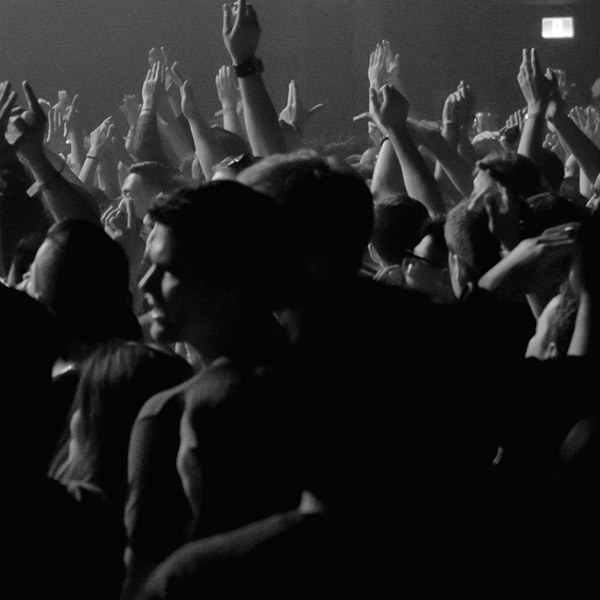20 Questions With DJ Koze: ‘The Proudest Moments of My Career Are When I See My Work Resonate With Others’
It’s been seven long years since the release of DJ Koze’s brilliant and beloved 2018 album Knock Knock, with his followup, Music Can Hear Us, released April 4 of the German wizard’s own Pampa Records label.
The project’s 15 tracks are classic Koze — music that feels at once totally organic and deeply considered, weaving in acoustic guitar, hand drums and bird calls while occasionally veering into dancefloor territory, but altogether equally as well-suited to a soundbath.
Featuring collaborations with artists including Damon Albarn, Sofia Kourtesis, Marley Waters and Ada and Sophia Kennedy (the latter two both Pampa Records signees), the project extends and expands Koze’s reputation as a sort of sage of electronic music, an artist who exists within the genre, but doesn’t always necessarily seem of it. It comes ahead of DJ Koze sets at summer festivals including Barcelona’s Primavera Sound in June and San Francisco’s Outside Lands this August.
Here, the artist born Stefan Kozalla engages in a characteristically existential conversation about the right setting in which to listen to Music Can Hear Us, the proudest moments of his career so far and more.
1. Where are you in the world right now, and what’s the setting like?
I am everywhere and nowhere, floating in the echo chamber of creation. The sun hums the rhythm, the moon sips the bassline.
2. What is the first album or piece of music you bought for yourself, and what was the medium?
The first music I did not buy, only receive. Sound is a gift from the universe, in my case from my mother, who sang me a lullaby while holding me against her chest.
3. What did your parents do for a living when you were a kid, and what do or did they think of what you’ve done and do now?
My father was an attorney, sharp with words and justice, while my mother was a midwife, bringing new life into the world. They saw me weaving rhythms out of thin air and said, “You’re an attorney of sound, defending truth with every beat, and a midwife to melody, helping music be born.“ I’m still Koze from da block.
4. What is the first non-gear thing you bought for yourself when you started making money as an artist?
The first thing I bought was a pair of shoes to walk a little further, a book to open my mind wider, and a Tascam 4 track to capture the thoughts that danced in my head.
5. If you had to recommend one album for someone looking to get into dance music, what would you give them?
Matthew Herbert’s Bodily Functions from 2001 is a truly unique album that blends house music with deep conceptual exploration.
6. What’s the last song you listened to?
“Remember to Remember” from Rick Holme.
7. If, as you say, Music Can Hear Us, what exactly does it hear?
Music hears everything — the heart, the soul, the past, the future. It hears thoughts before they are spoken.
8. Seriously though, please tell me the story behind or meaning of that album title?
Nothing to add.
9. I know you remixed Gorillaz’s “Humility” in 2018. Did that lead to Damon Albarn being on your album? Or if not, how did he end up on “Pure Love“?
Yes, the reincarnation of the old song was the birth of the new song.
10. Please, tell the story behind the name of “The Talented Mr. Tripley.” Does the title in any way nod to the song’s inspiration?
Mr. Tripley is a man with three faces — one for truth, one for lies, one for the space in between. It’s what you don’t hear or tell in a song that’s important!
11. What does success for the new album look like for you?
Success is making hearts resonate, not numbers.
12. Do you feel like there’s an ideal setting for it to be played in? Do you have recommendations for listeners, in terms of an optimal experience?
Play it in the desert at sunrise, play it underwater so the fish can listen, play it in a dark room with only a candle and the spirit beside you.
13. Pampa Records signees Ada and Sophia Kennedy are on the album. What is the label’s prevailing philosophy and approach?
Pampa Records is like a spaceship flying through sound, piloted by the rhythm itself. No borders, no walls—only music in its purest form.
14. The album cover art is gorgeous. What’s the story behind it?
The album cover art is truly special. My girlfriend, Gepa Hinrichsen, loves to paint with oils. She is my favorite painter. I feel incredibly lucky that her beautiful creations help to visualize the music, weaving together sound and vision in a way that transcends the ordinary.
15. In the sprawling world of electronic music and DJ culture, what pocket do you feel most connected to and comfortable in?
A little sparrow, who comes and goes, never staying too long but always leaving a trace of light and freedom.
16. What are the proudest moments of your career thus far?
The proudest moments of my career are when I see my work resonate with others. When someone tells me my music has sparked something in them or helped them navigate a difficult moment, I know I’m doing something meaningful. It’s those genuine connections that make it all worthwhile.
17. And what are you currently finding most challenging?
Maintaining a positive mindset amidst the cacophony of malicious men’s voices around us.
18. What’s the best business decision you’ve ever made?
To work together with my lovely problem solver, my manager Patric.
19. Who’s been your greatest mentor and what’s the best advice they ever gave you?
My dear wife: always s–t on the same pile please, but the s–t itself can always be different.
20. What’s one piece of advice you’d give your younger self?
Don’t fear the fire — become it.
Katie Bain
Billboard






